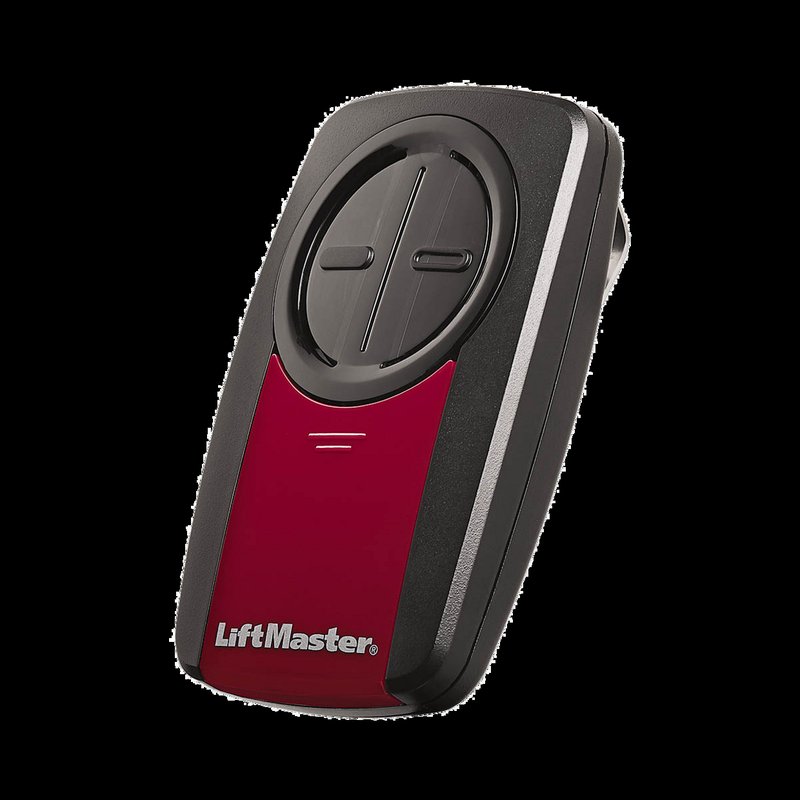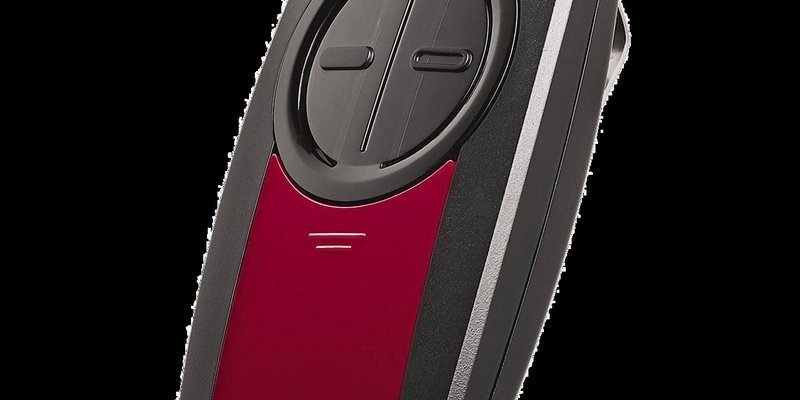
Here’s the thing: car manufacturers and garage door brands have tried to make life easier with built-in remote systems like HomeLink. But there’s still a lot of confusion about whether your car’s built-in buttons will actually sync with a Liftmaster opener. Let me break it down, step by step, so you know exactly what works, what doesn’t, and what to try if you’re stuck.
How Liftmaster Garage Remotes Communicate with Garage Doors
If you’re picturing magic, it’s really just radio signals—like walkie-talkies for your garage. A *Liftmaster garage remote* sends a special coded signal to the opener mounted above your garage door. If the opener “hears” the right code, it triggers the motor to lift or lower the door. It’s like a secret handshake between remote and machine.
The interesting bit is the rolling code technology inside most modern Liftmaster remotes. Rolling codes change the code every single time you press the button, making it super hard for sneaky types to copy. That’s important for security, but it also means your *car’s built-in remote* (if it has one) needs to understand this system to talk to your Liftmaster opener.
Older systems used dip switches—little toggles you’d match to get things working. But if your Liftmaster opener was made after about 1993, you’re almost certainly dealing with rolling codes and a “learn” button on the opener.
Can You Program Cars to Work with Liftmaster Garage Openers?
You might be wondering, “Okay, so my car has those three mysterious buttons near the rearview mirror or on the visor. Can those actually replace my Liftmaster remote?” Here’s how it usually works: many cars come with HomeLink or Car2U systems, built-in universal remote controls. Their whole job is to act just like your hand-held Liftmaster clicker—if you can get them paired up.
The process goes like this:
- First, you need to “clear” the car’s system if it’s been used before.
- Then, you hold your Liftmaster remote close to your car’s built-in button and press both buttons, so the system can “learn” the remote’s code.
- If your opener uses rolling codes, you’ll need to run into the garage, hit the “learn” button on the opener, and then quickly get back to your car to finish the pairing.
Honestly, it can feel like a weird dance—timing matters, and sometimes you get stuck in a loop of pressing buttons and waiting for blinking lights. But if both your car and your Liftmaster are compatible, it’ll work. The trick is: not all cars and not all Liftmaster openers play nicely with each other, especially if one of them is much older than the other.
Which Cars Are Compatible With Liftmaster Garage Remotes?
Not every vehicle on the road will sync with every garage opener, and that can make things confusing. Most cars with HomeLink systems built after 2012 have a pretty good shot at working with modern Liftmaster openers (especially those with Security+ or Security+ 2.0 tech). Both the HomeLink system and the Liftmaster opener must support rolling codes for things to work smoothly.
Here’s a general table showing what usually works:
| Car Remote System | Opener Year | Compatibility |
| HomeLink (2012+) | Liftmaster Security+ (1993-2011) | Usually Yes |
| HomeLink (2012+) | Liftmaster Security+ 2.0 (2012+) | Yes (may need HomeLink update) |
| HomeLink (pre-2012) | Liftmaster Security+ 2.0 (2012+) | No, unless HomeLink gets updated |
| Car2U | Security+ (rolling code) | Sometimes (check manufacturer) |
If your vehicle’s built-in remote system is having trouble pairing, check your car’s manual or the HomeLink website. Upgrades are sometimes possible, but honestly, older car remotes may never match up with the newest Liftmaster openers.
Step-by-Step: How to Pair Your Car with a Liftmaster Garage Door Opener
Let me walk you through the basic pairing process. This is the part where you might want to keep your coffee close, because sometimes it takes a few tries.
- Step 1: Sit in your car, turn the ignition on (but engine off), and locate the HomeLink buttons. Hold the two outer buttons for 10–20 seconds until the indicator light starts flashing. This erases previous codes.
- Step 2: Hold your Liftmaster remote a couple inches from the in-car button you want to program. Press and hold both the remote button and the car button until the HomeLink light changes from slow to rapid blinking. That means it’s learned the signal.
- Step 3: If your Liftmaster uses rolling codes (most since 1993), go to the opener unit in your garage. Press the “learn” button (usually purple, yellow, or red) until it lights up—don’t hold it down too long or you’ll wipe all codes.
- Step 4: Within 30 seconds, go back to the car and press the programmed HomeLink button for 2 seconds, three times. The garage door should move.
If nothing happens, don’t panic. Double-check that you’re following your vehicle’s specific pairing instructions, since steps can vary a bit. Sometimes the battery in your remote is dying and needs a quick swap. Other times, you might just have a signal timing hiccup—try again.
Troubleshooting: Why Won’t My Car Remote Pair With Liftmaster?
This is where things get frustrating. Even when you follow the instructions, sometimes the *garage opener* just won’t cooperate. Here are the main reasons:
- Outdated Car System: Some car remotes, especially those made before 2012, can’t handle Liftmaster’s newer rolling codes without a HomeLink “bridge” or update.
- Wrong Programming Steps: It’s easy to miss a timing window or to hold the wrong button for too long. Double-check the exact steps for your car and opener model.
- Low Battery: If your remote’s battery is weak, your car might not be able to “learn” the signal. Swapping in a new battery often fixes the problem.
- Interference: Wi-Fi routers, LED lights, and even some electronics can mess with garage door signals. Try moving your car closer to the opener during programming.
If you’ve tried everything and the two systems just won’t “see” each other, you might actually need a HomeLink repeater kit. It acts as a translator for older car remotes and newer openers.
What’s the Difference Between a Liftmaster Remote and a Universal Remote?
You might notice there are *universal remotes* on the market that claim to work with all brands. So, do you really need to use a Liftmaster brand remote, or can you grab a universal remote and program it to your opener—or even your car?
A Liftmaster remote is designed specifically for Liftmaster openers. Pairing is usually quick, and you can trust that all the security features—like rolling codes—will sync properly. Universal remotes, meanwhile, try to speak multiple “languages,” including Liftmaster’s. Sometimes they work great, but other times you’ll need to fuss with additional programming steps or codes.
If your car’s built-in system can’t pair with your particular garage door brand, a universal remote can be a solid workaround. Just keep it in the car like the old-fashioned clicker. The main trade-off is convenience. Built-in systems reduce clutter, but universal remotes offer versatility.
How Updating or Resetting Your Liftmaster Opener Affects Compatibility
Here’s a detail that trips people up: resetting or updating your Liftmaster opener can wipe out all paired remotes—including the one in your car. If you ever hit the “learn” button and hold it for too long, you might erase the memory. That means you’ll need to reprogram every remote and each car.
Some newer Liftmaster openers get firmware updates, which sometimes tweak how they sync with car systems. If you notice your remote suddenly won’t work after an update, check for new pairing instructions. Manufacturers sometimes change button sequences or timing, and you need to follow the latest steps.
If you’re setting up a brand new opener or just moved into a house with existing garage gear, it’s smart to erase all old codes for security, then pair your own remotes again—car included.
When to Call for Help or Consider Other Options
Honestly, there comes a point where you’ve tried re-pairing, swapped batteries, and double-checked every step, but nothing works. At that stage, don’t be shy—call Liftmaster support or your vehicle’s service center. Sometimes there’s a known issue, or your system just isn’t compatible without a HomeLink bridge or different remote.
If you want a hassle-free experience, you might stick with the original Liftmaster remote. But if you’re determined to use your car’s built-in buttons, and compatibility just isn’t happening, check if your car can be upgraded or if a universal repeater kit solves the issue.
No solution fits everyone, and sometimes good old trial-and-error is the only way to know if your car and your Liftmaster opener will become friends.
Wrapping Up: Making Liftmaster Garage Remotes Work With Your Car
So, are Liftmaster garage remotes compatible with cars? In many cases, yes—if your vehicle has a modern HomeLink (or similar in-car remote) and your Liftmaster opener supports rolling codes, you’ve got a good chance they’ll sync up. Sometimes it takes patience and a bit of fiddling with the “learn” button, but most folks can get things working without too much trouble.
If you’re running into roadblocks, check your car and opener’s age, reset and re-pair where needed, and don’t hesitate to look up your manuals for specifics. When all else fails, there’s no shame in using a universal remote or asking for expert help.
The bottom line? With the right combo of timing, codes, and (sometimes) a dash of luck, you can ditch the old clicker and enjoy the simple luxury of opening your garage from the driver’s seat—no more hunting for lost remotes.
